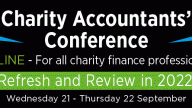Management & leadership, Finance & law
10 tips for running a remote audit successfully
Here are some tips from Fleur Holden from Sayer Vincent on carrying out an audit whilst working remotely.
How can you plan for a smooth remote audit within your organisation? Based on recent experience at Sayer Vincent, here are our ten tips for how to prepare and what to expect.
1. Preparation is key
As a start, ask your auditor for a checklist of the information and documentation you will need to provide for the audit. Review this list carefully to ensure you have access to all the information from your current location. If some information is not available, flag this early so plans can be made for how it can be accessed or what alternative information might be acceptable. You should arrange a call or virtual meeting with your auditor a week ahead to discuss your preparation.
2. Share information electronically
Ideally you will be given access to a digital portal to upload and share the information necessary to complete your audit. Alternatively, agree how to do this via email or by using another method. Update your checklist with the status of what has been provided and reference all documentation to help the auditor identify and locate it. If information is needed from your team, co-ordinate this and provide your auditor with their contact information in case of queries.
3. Sample selection as early as possible
To ensure maximum time to find documentation, provide accounts and supporting nominal ledger reports at least one week before the audit. Your auditor can then work on the detailed transaction reports to select the items they wish to test.
4. Explain what might be different
Some documentation may be with a member of staff who is furloughed, signed copies of documents may only be in paper format but you have an unsigned digital copy, and some internal controls may have been adapted to work in remote circumstances. Help your auditor by sharing such details early on rather than waiting for queries or issues to arise.
5. Desktop sharing
Some audit procedures require your auditor to observe you walking through a process, demonstrating an internal control or accessing information on a system that cannot be accessed directly, such as electronic banking. Microsoft Teams and Zoom allow participants in a video call to share their screen. Thus, your auditor can use technology to simulate being sat beside you at your desk and see information on your screen.
6. Working preferences
The audit may not be your sole activity and you may worry you have other commitments to juggle each day. Your auditor will be aware of this so tell them your working hours and when and how to contact you to reduce pressure.
7. Regular communication and virtual meetings
Your auditor can invite you to video calls even if you do not have the software. It helps if you consider who your auditor will need to speak to in the finance team and beyond and how and when they can be contacted. Your auditor will also be happy to attend the finance committee or board meetings remotely too. Ensure they are included in all meeting invitations and sent the relevant papers when they are circulated electronically.
8. Regular update reports
Your auditor will normally provide an update report at the end of the audit week detailing any outstanding information. With a remote audit, it can be helpful to receive these updates more regularly. Let your auditor know if you would like an outstanding list each day instead.
9. Manager review
Your audit manager would usually visit your office during the audit to review the work and discuss any findings with you. This process can be replicated remotely, with the audit manager reviewing the audit work before arranging a meeting to discuss any findings with you in a virtual meeting.
10. Audit work that cannot be done
Perhaps some audit work cannot be done without access to the office, where evidence is only available in hard copy. Your auditor will use alternative evidence wherever possible, but you may need to agree a list of information to review later, when you can access your office. Where necessary, discuss with your auditor any implications for your timetable.
With careful planning, a good check list and the right technology, there is no reason why a remote audit can’t be as smooth as a face to face one.
Originally posted on Sayer Vincent’s website.

